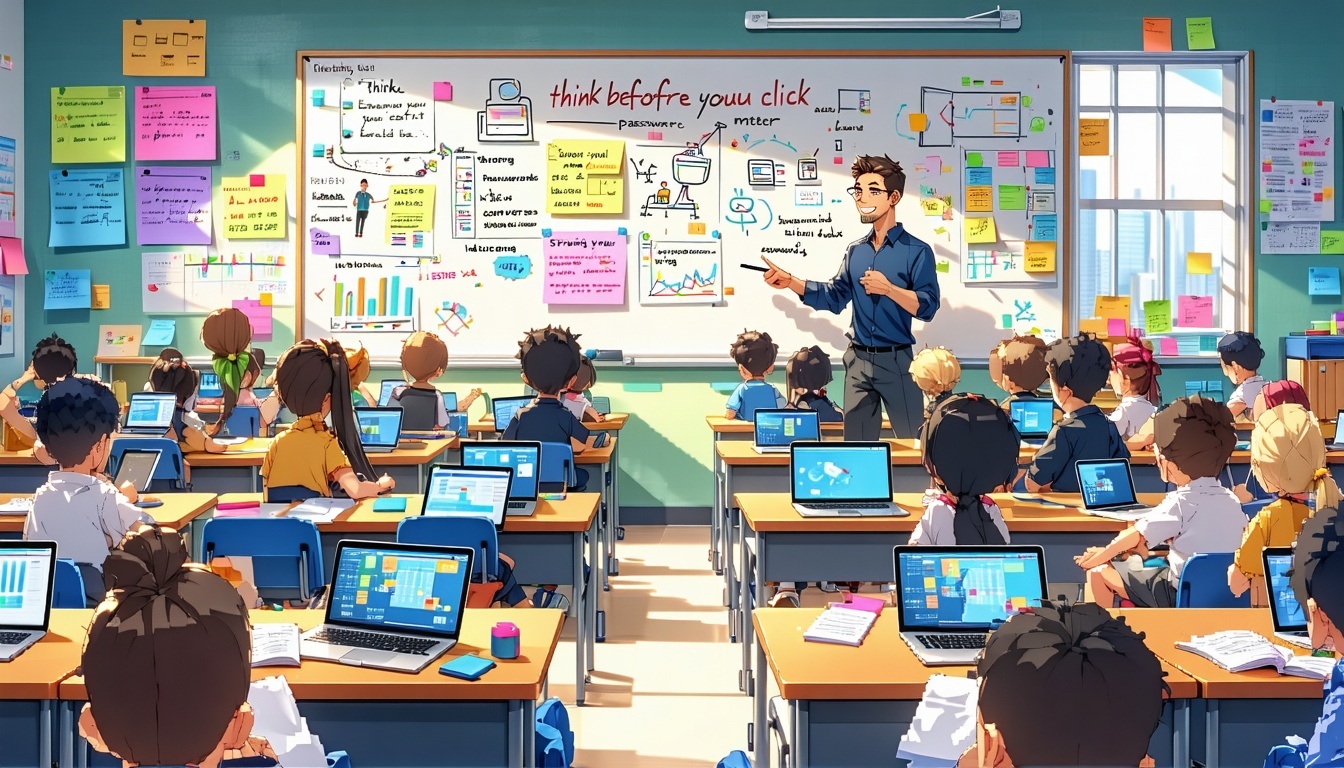The Role of AI in Detecting Cyber Threats in Schools
The article explores the growing role of AI in protecting schools from evolving cyber threats as educational environments become increasingly...
You must be logged in to the LATechNet portal to view additional resources.

Network downtime refers to any period when a school's internet or network system isn't working properly. Think of it like the digital version of a power outage—everything suddenly stops, and everyone feels stuck. In today's classrooms, students and teachers depend on a reliable network for almost everything, from online lessons and research to communication and homework submission. When the network goes down, even briefly, it can disrupt learning, frustrate teachers, and stall important administrative tasks.
These disruptions can negatively affect students' attention and engagement, interrupt planned lessons, and waste valuable teaching time. Teachers may have to quickly shift gears, scrambling to find offline alternatives. Because technology is deeply tied to education, keeping networks up and running smoothly is crucial to maintaining a productive and stress-free learning environment.
When the school network goes down, it's more than just an inconvenience—it directly affects how students engage and learn. A 2022 survey revealed that 63% of educators experienced lost learning time, while 45% reported lost teaching time due to device downtime (source). Imagine students preparing diligently for an online test, only to have the network crash mid-exam. Downtime creates frustration, distracts learners, and can even widen academic gaps. Over time, frequent outages can significantly hinder academic performance, especially impacting students from underserved communities who depend heavily on school internet access for their learning resources.
Aside from learning disruptions, network downtime can hit a school's budget hard. Between 2018 and September 2023, ransomware attacks alone caused educational institutions $53 billion in downtime costs (source). But it's not just ransomware—unexpected outages also lead to hidden expenses like emergency repairs, staff overtime, and lost productivity. Imagine the overtime pay needed for IT staff called in for emergencies, or the financial toll of delayed administrative tasks. Downtime isn't just costly; it quietly drains resources that could otherwise enhance student learning and school improvements.
When it comes to network downtime in schools, understanding the root causes is critical. Let's first talk about the technical factors. Often, hardware failures or outdated equipment can slow things down or even halt connectivity altogether. Aging routers, switches, or servers tend to fail more frequently, leaving teachers and students frustrated. Additionally, software vulnerabilities and cybersecurity threats can compromise network security, causing unexpected shutdowns or disruptions. Connectivity issues, like insufficient bandwidth or overloaded networks, can also create bottlenecks, limiting everyone's online experience.
But it's not just technology—human factors play a big role too. Did you know that a common cause of downtime is simply human error, such as incorrectly configuring devices (source)? Mistakes happen, especially when staff are not adequately trained. Moreover, insufficient preventive maintenance routines can leave the network vulnerable to problems that proactive care might otherwise avoid.
Imagine your school's network as a busy highway—when one lane closes, traffic slows down. Likewise, your network needs alternate routes. Having redundant infrastructure, like multiple internet providers or backup power solutions, means that if one path fails, another one seamlessly takes over, keeping your network running smoothly (source). Implementing failover mechanisms and redundant power supplies can help your school stay online even during outages, ensuring teaching and learning are not interrupted (source). Keeping everything updated—hardware and software alike—is equally essential. Regular updates protect your network from vulnerabilities and enhance performance, just like regular check-ups keep your car running smoothly.
Acting proactively is always better than reacting after a problem arises. Ongoing monitoring and diagnostics help catch small issues before they become major outages, saving valuable classroom time. Equipping staff with regular training and awareness programs also goes a long way in reducing human errors. Moreover, having clear incident response and disaster recovery plans can significantly cut down recovery time, ensuring minimal disruption. Think of proactive management as regular fire drills—you hope you never have to use them, but you're ready if something happens.
One of the most effective ways schools can minimize network downtime is by using advanced monitoring solutions. Think of these tools as your network's early warning system—they watch your network every second of the day and quickly alert you if something goes wrong. Real-time monitoring helps catch small issues before they become big problems and even resolves them automatically. Plus, automating routine network tasks, like backups or updates, means fewer chances of human mistakes that can lead to downtime.
Another helpful approach is partnering with experienced IT service providers. These professionals bring specialized knowledge and skills, helping your school's network run smoothly. For example, one school district significantly reduced downtime by outsourcing their network support to experts who quickly identified and solved recurring issues. Having external IT support can save valuable time and resources, letting educators focus on teaching instead of troubleshooting technology.
When it comes to keeping school networks running smoothly, LATechNet stands out as a trusted partner. Specializing in educational technology, they understand exactly what schools need. LATechNet offers personalized solutions that start with thorough infrastructure assessments, identifying areas that need attention before problems occur. With proactive monitoring, they spot potential issues early, helping prevent disruptive downtime that impacts classrooms.
Additionally, LATechNet prioritizes cybersecurity to protect sensitive student and school data, creating a safe digital environment for everyone. They also provide disaster recovery planning, ensuring that if something unexpected happens, your network gets back up and running quickly. Through their reliable support and ongoing maintenance services, LATechNet shows a genuine commitment to reducing disruptions and enhancing the learning experience. After all, a stable, secure network means teachers can focus more on teaching and students on learning.
Network downtime in schools can disrupt learning, frustrate teachers, and slow down important administrative tasks. We've explored how these issues commonly arise—from outdated equipment and insufficient bandwidth to human errors and poor maintenance practices. Thankfully, schools can take proactive steps to prevent these problems by regularly updating equipment, training staff, and investing in reliable network infrastructure. Remember, seeking expert technical assistance can make a huge difference, providing the experience and tools needed to keep your school's network running smoothly. Prioritizing network reliability isn't just about technology—it's about ensuring uninterrupted learning experiences for every student and teacher. By making these changes, schools can keep their classrooms connected and their educational goals on track.

The article explores the growing role of AI in protecting schools from evolving cyber threats as educational environments become increasingly...

Ransomware attacks are increasingly targeting K-12 schools, disrupting learning and compromising sensitive data. These attacks often begin through...
The article discusses the importance of setting up a tech help desk in educational institutions to support teachers and students in effectively using...